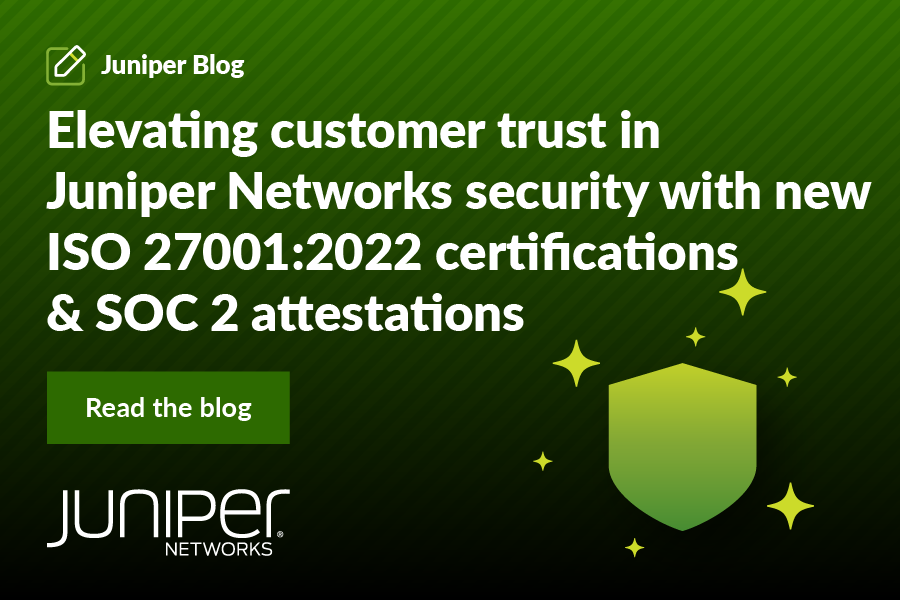Security automation can be the key for organizations to improve their security posture and make the most of scarce security personnel. However, more than 70 percent say that they struggle with adoption due to vendor sprawl in their security environments and a lack of skilled professionals to implement a broader automation initiative.
Meanwhile, from “AutoSploit” for automated internet scanning and exploitation to “Sentry MBA” for credential stuffing, cybercriminals have a history of innovating their attacks by leveraging automation. This makes it even more critical in today’s ever-escalating game of cyber-cat and cyber-mouse to build a reciprocal defense.
Juniper Networks partnered with the Ponemon Institute to conduct a new study, The Challenge of Building the Right Security Automation Architecture, and found that the need for and benefit of security automation is crystal clear, but implementation has its difficulties.
Our new research illuminates a bit of a paradox – organizations understand that automation will help them combat threats, improve security posture and empower security teams to do more, but they also believe that deployment of automation will be complex and time-consuming. To take advantage of security automation, it is important for organizations to understand the tasks where benefits can be achieved most quickly since these are often the ones that take the most time for security personnel.
According to Cybersecurity Ventures by 2021 there could be 3.5 million unfilled security jobs. Our survey respondents say that automating front line security processes like incident response, malware investigation and security analytics are top priorities with the expectation that their security experts will be freed up to concentrate on the top priority issues. At the same time, 57% say that they are unable to recruit personnel with the skills needed to deploy and integrate automation tools.
Here are some additional highlights from the study:
- Security automation is a must NOW for security teams to be more effective. 70 percent of respondents acknowledge its importance in achieving a strong security posture today.
- Vendor sprawl is creating chaos with complex environments being built on stand-alone security tools and resulting in ineffective defense. According to 59 percent of respondents, streamlining the number of vendors will yield the maximum value of security automation.
- Manual SIEM activities are a time sink resulting in security teams sifting through unrelated alerts and logs. This leaves precious little time to make strategic security decisions. 59 percent of respondents say that automating some manual SIEM tasks would improve productivity.
On Tuesday, July 24th, 2018 at 10 am PDT, Amy James, Portfolio Marketing Director, and Dr. Larry Ponemon, Founder Ponemon Institute, will be presenting a webcast and diving deeper into this report. Please join us and register to hear more about the challenges and benefits of security automation.
About the Report:
“The Challenge of Building the Right Security Automation Architecture” report, sponsored by Juniper Networks and conducted by Ponemon Institute, highlights findings and insights derived from a sample of 1,859 IT and IT security practitioners located in Germany, France, the United Kingdom and the United States and who are familiar with their organizations’ use of security automation and have some responsibility for evaluating and/or selecting security automation technologies and vendors.
Additional Resources:
- Follow Juniper Networks online: Facebook | Twitter| LinkedIn
- Juniper Blogs and Community
- Juniper 1on1 app: Keep up with all things Juniper from your smartphone. Download the app from iTunes and Google Play store

























